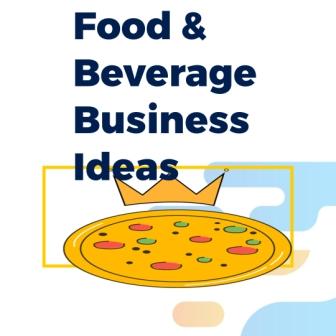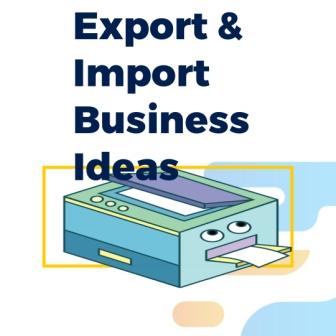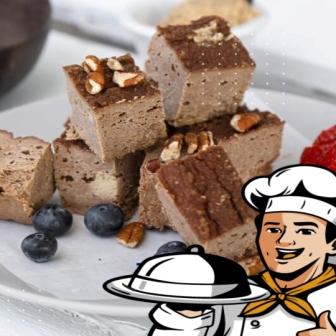15 Best Faceless YouTube Channel Ideas to Make you Money
Looking for how to start a YouTube business but prefer staying off-camera? Here’s a comprehensive list of faceless YouTube channel ideas along with the necessary skills and tools for each concept.
Whether you’re a master editor or a storytelling genius, there’s something here for everyone.
So, if you have been longing to start a YouTube channel to make money and you are asking: what YouTube channel should I start or which YouTube niche is the most profitable, here is my answer.
Starting a YouTube channel is just like starting a business except you are just doing it for fun. So, I will advice you start a channel in the area you have interest.
Managing a YouTube channel is HARD WORK, just like any other business. You need consistency and hard work to be able to grow a channel that will make you money. A lot of people who are putting in the work are making lots of money on YouTube EVERYDAY and you can too.
Listed below are popular faceless YouTube channel ideas, how you can start and the tools you need to make the job easier.
So, check them out and get inspired to start your own channel without ever showing your face!
Table of Contents
Do you Want to Grow Your YouTube Channel Faster?
Add your name and email address below to download our Fast YouTube Growth checklist for FREE
Benefits of a Faceless YouTube Channel
- Creating a faceless channel is hassle-free!
- You’ll save on expensive equipment like cameras, lights, and microphones.
- No need to fret about camera shyness!
- You can steer clear of unwanted attention from family, friends, and colleagues
Faceless YouTube Channel Ideas
What is the best niche for a faceless YouTube channel? Listed below are the most popular niches. So, pick one that most interests you and hit the ground running.
Motivational YouTube Video Channel
Provide videos of inspiring quotes, inspiring speeches etc.
Here are a list of motivational faceless YouTube video content ideas:
1. A channel dedicated to delivering daily doses of inspiration, motivation, and positivity through uplifting quotes, stories of success, motivational interviews, and actionable advice to pursue their dreams fearlessly and encouraging messages.
2. Start a channel that empowers viewers to transform their lives and reach their full potential with a channel that offers tools and resources for personal growth, self-improvement, and empowerment.
3. You may also start a channel that focuses on the power of mindset and explore topics such as growth mindset, resilience, self-belief, and overcoming obstacles to unlock personal and professional success.
Example of a faceless motivational YouTube channel:
Channel by: BenLionelScott | Subscribers: 3.15M | 72M Views
How to Earn Money with motivational YouTube channels:
1. Affiliate marketing: Recommend personal development books in your video description and add your affiliate link
2. YouTube ads: Allow YouTube to run ads on your channel when your channel gets enough subscribers and views.
3. Sell your products: Add a link to your related product to the video description.
Cooking or Recipe YouTube channels
faceless YouTube channel dedicated to bringing delicious recipes and cooking techniques to food enthusiasts without the need for on-camera appearances. This channel focuses on high-quality visuals and clear, concise instructions to make cooking accessible and enjoyable for everyone.
Content Format:
Recipe Demonstrations:
- Step-by-step walkthroughs of various recipes, from simple weeknight dinners to elaborate holiday feasts.
- Focus on close-up shots of ingredients, cooking processes, and final dishes to ensure viewers can easily follow along.
Cooking Tips and Techniques:
- Short videos highlighting essential cooking tips and techniques, such as knife skills, cooking methods, and ingredient preparation.
- Use slow-motion and detailed visuals to clearly demonstrate each step.
Themed Cooking Series:
- Create series around specific themes, such as “Quick and Easy Weeknight Meals,” “Healthy Cooking,” “World Cuisine,” or “Baking Basics.”
- Each series can have a playlist for viewers to easily find related content.
Ingredient Spotlights:
- Videos focusing on specific ingredients, showcasing their versatility, preparation methods, and recipe ideas.
- Include fun facts, nutritional information, and storage tips.
Collaborations and Guest Recipes:
- Feature recipes from guest chefs or home cooks, with voiceovers explaining the process.
- Collaborate with other food channels for cross-promotion and diverse content.
Channel by: Hearty & Tasty | Subscribers: 1.33M | 5.5M Views
How to Monetise this kind of channel
1. Affiliate marketing: Recommend kitchen tools, gadgets, and ingredients in your video descriptions. Earn a commission when viewers purchase products through your links.
2. Ad Revenue: Once your channel meets YouTube’s eligibility requirements (1,000 subscribers and 4,000 watch hours in the past 12 months), you can apply for the YouTube Partner Program. This allows you to earn money from ads displayed on your videos.
3. Sell recipe books or cook books, train people on how to cook (live class or online course). Add a link to your course or book on your description and use YouTube to drive traffic to where you are selling it.
Do you Want to Grow Your YouTube Channel Faster?
Add your name and email address below to download our Fast YouTube Growth checklist for FREE
Top 5 or Top 10 YouTube channels
People love watching Top 5 and Top 10 videos which helps them make quick purchase or life decisions.
Whether it’s the Top 5 best mobile games for kids or the Top 10 ways to earn money online, these videos offer an engaging blend of education and entertainment.
Typically, the lists are presented in ascending order to keep viewers hooked, eagerly awaiting the top item.
Channel by: Top 5 Picks | Subscribers: 197k | 57k Views
How to Monetise this kind of channel
1. Affiliate marketing: Recommend the products in your top picks and add your affiliate link in the video description.
You earn commission when someone clicks on those links and buy the product.
2. Google Adsense: Enable YouTube ads to earn revenue from ads when people watch your channel content.
Folk Tale/Story YouTube Channels
Dive into the myths, legends, and folklore from cultures around the world, unraveling the stories behind ancient myths, legendary creatures, and mythical heroes.
The channel will blend storytelling, illustrations, and cultural analysis to explore the timeless themes found in folklore.
Content Format:
1. Regional Folklore Showcase: Explore the diverse folklore traditions of different regions across Africa, from West African Yoruba myths to East African Maasai legends and Southern African San stories.
Highlight the unique characteristics and storytelling styles of each culture.
2. Ancestral Spirits and Deities: Introduce viewers to the pantheon of African gods, goddesses, and spirits worshipped in traditional religions.
Share myths and stories that depict their powers, attributes, and interactions with humans.
3. Animal Fables and Moral Tales: Retell classic African animal fables and moral tales featuring clever animals like the hare, the tortoise, and the cunning spider Anansi.
Uncover the moral lessons and cultural values embedded in these timeless stories.
4. Epic Hero Journeys: Narrate epic hero journeys and quest narratives from African mythology, featuring legendary figures such as Sundiata Keita of Mali, Queen Makeda of Sheba, or the trickster god Eshu.
Follow their adventures and trials as they confront challenges and foes.
5. Creation Stories and Origin Myths: Share creation stories and origin myths from African cultures, exploring the cosmological beliefs and mythological narratives that explain the origins of the universe, humanity, and natural phenomena.
6. Supernatural Beings and Creatures: Unravel the mysteries of African folklore by introducing viewers to a variety of supernatural beings and mythical creatures, including shape-shifters, water spirits, forest guardians, and ancestral ghosts.
7. Cultural Festivals and Traditions: Spotlight cultural festivals, rituals, and storytelling traditions from different African communities, such as the storytelling festivals of the Dogon people in Mali or the masquerade performances of the Igbo people in Nigeria.
8. Contemporary Adaptations: Showcase modern interpretations and adaptations of African myths and legends in literature, art, film, and popular culture.
Discuss how ancient stories continue to inspire and influence contemporary storytelling.
Channel by: African Folktales | Subscribers: 4.13k | 123k Views
How to Monetise this kind of channel
1. Affiliate marketing: Recommend story books books
2. Google Adsense: Allow YouTube to run ads on your channel
3. Sell story books.
Do you Want to Grow Your YouTube Channel Faster?
Add your name and email address below to download our Fast YouTube Growth checklist for FREE
Productivity Hacks YouTube Channels
Start a YouTube channel dedicated to helping viewers optimize their time, enhance their efficiency, and achieve their goals through practical productivity hacks and strategies.
The channel offers valuable tips, tools, and techniques to boost productivity in both personal and professional life.
Content Format:
Tutorial Videos:
- Step-by-step guides on using productivity tools and apps (e.g., Trello, Notion, Todoist).
- Detailed walkthroughs on setting up productivity systems like GTD (Getting Things Done) or the Pomodoro Technique.
Listicles and Tips:
- Top 10 productivity hacks for students, professionals, or entrepreneurs.
- Quick tips for managing time, reducing distractions, and staying focused.
Deep Dives and Case Studies:
- In-depth analysis of productivity methods and frameworks.
- Case studies of successful people and how they manage their time.
Animated Explainers:
- Short, engaging animations explaining complex productivity concepts.
- Visual storytelling to illustrate the benefits of different productivity techniques.
Routine and Workflow Showcases:
- Examples of effective daily routines and workflows.
- “A Day in the Life” style videos showcasing productive habits.
Interviews and Collaborations:
- Interviews with productivity experts and thought leaders.
- Collaborative videos with other productivity-focused YouTubers.
Channel by: Iman Gadzhi | Subscribers: 4.83 M | 1 M Views
How to Monetise this kind of channel
1. Affiliate marketing: Partner with companies that offer productivity tools and apps (e.g., Trello, Notion, Todoist). Share affiliate links in your video descriptions and earn commissions on sales generated through your links.
2. Enable Monetization: Once your channel meets YouTube’s Partner Program requirements (1,000 subscribers and 4,000 watch hours in the past 12 months), you can enable monetization to start earning from ads.
3. Sponsorships and Brand Deals: Collaborate with brands to create sponsored videos where you highlight their products or services. Ensure the brands align with your channel’s focus on productivity.
4. Branded Merchandise: Create and sell branded merchandise such as productivity planners, notebooks, calendars, and motivational posters. Use platforms like Teespring, Spreadshirt, Etsy or Merch by Amazon.
5. Digital Products: Sell digital products like printable productivity worksheets, templates, and eBooks. Use platforms like Gumroad or Amazon for digital downloads.
6. Create Courses: Develop online courses or workshops on productivity strategies and techniques. Use platforms like Udemy, Teachable, or Skillshare to host and sell your courses.
7. YouTube Memberships: Enable channel memberships where subscribers can pay a monthly fee for exclusive content, early access to videos, behind-the-scenes footage, and other perks.
8. Personal Coaching: Offer one-on-one productivity coaching sessions, helping clients improve their time management, organization, and efficiency.
Do you Want to Grow Your YouTube Channel Faster?
Add your name and email address below to download our Fast YouTube Growth checklist for FREE
DIY (Do it yourself) Tutorial Channel
Create inspiring do-it-yourself (DIY) tutorials. From crafting and home decor to fashion and beauty, this channel offers step-by-step guides and innovative ideas for viewers to unleash their creativity and transform ordinary materials into extraordinary works of art.
Content Format:
1. Crafting Tutorials: Explore a wide range of crafting projects, including paper crafts, scrapbooking, knitting, crochet, sewing, and more.
Each tutorial provides detailed instructions, tips, and techniques for creating beautiful handmade items.
2. Home Decor DIYs: Revamp your living space with DIY home decor projects, such as wall art, decorative pillows, furniture makeovers, and seasonal decorations.
Learn how to personalize your home with style and flair on a budget.
3. Fashion and Accessories: Elevate your wardrobe with DIY fashion and accessory tutorials, including clothing alterations, jewellery making, handbag customization, and shoe embellishments.
Express your unique sense of style with handmade fashion statements.
4. Upcycling and Recycling: Embrace sustainability and creativity with upcycling and recycling projects that transform everyday objects into new and useful creations.
Discover innovative ways to repurpose old materials and reduce waste.
5. DIY Gifts and Greeting Cards: Show your loved ones you care with heartfelt DIY gifts and handmade greeting cards for every occasion.
Get inspired by personalized gift ideas and creative card-making techniques.
6. Beauty and Self-Care DIYs: Treat yourself to DIY beauty and self-care tutorials, including homemade skincare products, natural cosmetics, bath bombs, and aromatherapy candles.
Pamper yourself with luxurious spa treatments at home.
7. Holiday and Seasonal Crafts: Celebrate holidays and seasons with festive DIY projects and decorations, from Halloween costumes and Christmas ornaments to Easter crafts and summer party essentials.
Bring joy and cheer to every occasion.
8. DIY Organization Solutions: Streamline your life with DIY organization solutions for your home, office, and personal life.
Learn how to declutter, organize, and optimize your space with creative storage hacks and organizing tips.
Channel by: Digital Sat Pro | Subscribers: 196k | 1.3M Views
How to Monetise this kind of channel
1. Affiliate marketing: Recommend courses of where to buy raw materials for the crafts
2. Google adsense: Allow Youtube to run ads on your channel
3. Sell finished craft products and courses on how to make more crafts
Product Tutorial Videos
Are you passionate about tech and gadgets but prefer staying behind the camera?
Start a YouTube channel dedicated to providing detailed and easy-to-follow tutorials on various tech products, gadgets, and software.
The aim is to help viewers understand and utilize their tech products to their fullest potential through step-by-step guides and comprehensive reviews.
Content Format:
Unboxing and Setup Guides:
- Unboxing Videos: Showcase what’s inside the box and give first impressions.
- Setup Guides: Provide step-by-step instructions to help viewers get started with their new products.
How-To Tutorials:
- Feature Tutorials: In-depth guides on specific features of tech products.
- Tips and Tricks: Share lesser-known tips to maximize product functionality.
Product Comparisons:
- Side-by-Side Comparisons: Compare similar products, highlighting their pros and cons.
- Recommendation Videos: Suggest products based on specific user needs and preferences.
Software Walkthroughs:
- Interface Tours: Walk viewers through software interfaces, explaining functionalities.
- Task Tutorials: Guide viewers on how to complete specific tasks using the software.
Troubleshooting and FAQs:
- Common Issues: Identify common issues and provide troubleshooting steps.
- FAQ Videos: Answer frequently asked questions and offer practical solutions.
Channel by: Sassyin Korea | Subscribers: 430K | 9.6M Views
How to Monetise this kind of channel
1. Affiliate marketing: Recommend the product you are unboxing by adding your affiliate link for the product in the video description
2. Google Adsense: Enable Google ads on your YouTube channel.
Do you Want to Grow Your YouTube Channel Faster?
Add your name and email address below to download our Fast YouTube Growth checklist for FREE
Gaming Video channel
If you love gaming and would like to make money off your skill, create a YouTube channel dedicated to providing high-quality gaming content without the need for on-camera appearances.
The channel focuses on gameplay, tutorials, reviews, and tips to help viewers improve their gaming skills and stay updated with the latest in the gaming world.
Content Format:
Gameplay Walkthroughs:
- Full Game Playthroughs: Record and commentate entire game playthroughs, providing tips and strategies.
- Level Guides: Create detailed guides for specific levels or missions.
Game Reviews and First Impressions:
- Game Reviews: Provide in-depth reviews of newly released games, discussing gameplay, graphics, story, and overall experience.
- First Impressions: Share your initial thoughts and reactions to newly released or upcoming games.
Tips and Tricks:
- Strategy Guides: Offer advanced strategies and tips for popular games.
- Top 10 Lists: Create lists of the best weapons, characters, strategies, etc.
Let’s Play Series:
- Series Playthroughs: Record episodic content of popular games, with engaging commentary.
- Collaborative Let’s Plays: Collaborate with other gamers for multiplayer game content.
News and Updates:
- Gaming News: Cover the latest news and updates in the gaming industry.
- Patch Notes and Updates: Discuss new game patches, updates, and what they mean for players.
Channel by: Anshu Bisht| Subscribers: 6.01M | 642.992M Views (in just 10 hours!)
How to Monetise this kind of channel
1. YouTube Partner Program
- Enable Monetization: Once your channel meets YouTube’s Partner Program requirements (1,000 subscribers and 4,000 watch hours in the past 12 months), you can enable monetization to start earning from ads.
2. Super Chat and Super Stickers
- Live Streaming: During live streams, viewers can purchase Super Chats and Super Stickers to highlight their messages and support your channel. This feature is available once your channel is monetized and you’re live streaming.
3. Channel Memberships
- Membership Tiers: Offer channel memberships where subscribers can pay a monthly fee for exclusive content, badges, emojis, and other perks. Create different membership tiers with varying levels of benefits.
4. Affiliate Marketing
- Gaming Gear and Accessories: Partner with companies that sell gaming gear, accessories, or digital products. Share affiliate links in your video descriptions and earn commissions on sales generated through your links.
- Game Sales: Promote game sales through affiliate programs from platforms like Amazon, Green Man Gaming, or Humble Bundle.
5. Sponsorships and Brand Deals
- Sponsored Content: Collaborate with brands to create sponsored videos where you highlight their products or services. Ensure the brands align with your channel’s focus on gaming.
6. Merchandise Sales
- Branded Merchandise: Create and sell branded merchandise such as t-shirts, hoodies, posters, and mugs. Use platforms like Teespring, Spreadshirt, or Merch by Amazon.
- Digital Products: Sell digital products like game guides, eBooks, or custom game mods. Use platforms like Gumroad or Etsy for digital downloads.
7. Online Courses and Coaching
- Gaming Skills: Offer online courses or one-on-one coaching sessions to help others improve their gaming skills. Use platforms like Udemy, Teachable, or Skillshare to host and sell your courses.
- Streaming Setup: Provide coaching on how to set up and grow a gaming channel or stream effectively.
9. Ad Revenue from Other Platforms
- Repurpose Content: Share your YouTube videos on other monetizable platforms like Facebook, Instagram (IGTV), and LinkedIn to generate additional ad revenue.
- Short-Form Content: Create and monetize shorter gaming tips on platforms like TikTok and Instagram Reels.
10. Gaming Tournaments and Events
- Host Tournaments: Organize and host online gaming tournaments with entry fees and sponsorships. This can also drive traffic to your channel.
- Live Events: Host live gaming events or participate in gaming expos and conferences, monetizing through ticket sales, sponsorships, and live streaming donations.
Do you Want to Grow Your YouTube Channel Faster?
Add your name and email address below to download our Fast YouTube Growth checklist for FREE
Language Learning Video channel
Create a YouTube channel dedicated to teaching languages like English, French, Spanish, Igbo or other local language through engaging, high-quality content that helps viewers learn and practice new languages effectively.
The channel offers lessons, tips, and resources for learners of all levels, from beginners to advanced.
Content Format:
Grammar and Vocabulary Lessons:
- Short Lessons: Create short, focused videos on specific grammar rules or vocabulary themes (e.g., colors, food, travel).
- Thematic Vocabulary: Videos covering vocabulary for specific situations or themes, such as traveling, shopping, or business.
Pronunciation Guides:
- Phonetic Lessons: Teach the correct pronunciation of letters, words, and phrases using phonetic symbols and examples.
- Accent Training: Provide tips and exercises to help learners acquire the correct accent and intonation.
Conversation Practice:
- Dialogues: Record dialogues for different scenarios (e.g., at a restaurant, meeting someone new) and break them down for learners.
- Role-Playing Exercises: Offer role-playing scenarios that viewers can practice along with.
Cultural Insights:
- Cultural Context: Create videos explaining cultural nuances and customs associated with the language being taught.
- Language in Context: Show how the language is used in real-life situations, including idiomatic expressions and slang.
Language Learning Tips:
- Study Tips: Share effective study techniques and resources for language learning.
- Motivational Videos: Encourage learners to stay motivated and consistent in their language studies.
Channel by: Kids Songs & Nursery rhymes| Subscribers: 1.37M | 55M Views
How to Monetise this kind of channel
1. Affiliate marketing: Partner with companies that offer language learning tools and resources (e.g., language apps, textbooks, online courses).
Share affiliate links in your video descriptions and earn commissions on sales generated through your links.
Books and Resources Promote language learning books and resources available on platforms like Amazon.
2. YouTube Ad Revenue: Enable Monetization: Once your channel meets YouTube’s Partner Program requirements
3. Sponsored Content: Collaborate with brands to create sponsored videos where you highlight their language learning products or services.
4. Create Courses: Develop online courses on specific aspects of language learning (e.g., grammar, conversation skills). Use platforms like Udemy, Teachable, or Skillshare to host and sell your courses.
5. Private Tutoring: Offer one-on-one or group tutoring sessions for personalized language learning experiences.
Relaxing/Study & Meditation channel
Create a channel dedicated to helping viewers find inner peace, relaxation, and mindfulness through guided meditation and calming content.
With a variety of meditation practices, relaxation techniques, and mindfulness exercises, this channel aims to promote mental well-being, reduce stress, and enhance overall quality of life.
Content Format:
1. Guided Meditation Sessions: Offer a variety of guided meditation sessions tailored to different needs and preferences, including mindfulness meditation, body scan meditation, loving-kindness meditation, and visualization exercises.
Each session provides soothing narration and gentle guidance to help viewers relax, focus, and unwind.
2. Breathing Exercises: Introduce viewers to various breathing techniques and pranayama exercises to promote relaxation, reduce anxiety, and improve focus and concentration.
Teach techniques such as deep breathing, alternate nostril breathing, and box breathing for stress relief and emotional balance.
3. Progressive Muscle Relaxation: Guide viewers through progressive muscle relaxation exercises to release tension, reduce muscle stiffness, and promote physical and mental relaxation.
Help viewers cultivate body awareness and learn to let go of stress and tension.
4. Nature Sounds and Relaxation Music: Provide immersive experiences with nature sounds, ambient music, and calming soundscapes to create a tranquil atmosphere for meditation and relaxation.
Curate playlists of soothing sounds, including ocean waves, forest birdsong, rainfall, and gentle instrumental music.
5. Mindfulness Practices: Teach viewers mindfulness techniques and practices for cultivating present-moment awareness, acceptance, and non-judgmental observation.
Offer mindfulness exercises such as mindful breathing, mindful walking, and body scan meditation to enhance mindfulness skills and cultivate inner peace.
6. Stress Reduction Tips: Share practical tips, strategies, and lifestyle changes for managing stress and promoting mental well-being in daily life.
Offer advice on stress management, time management, self-care practices, and creating healthy boundaries to support viewers in achieving balance and resilience.
7. Sleep Meditation and Relaxation: Provide guided meditation sessions and relaxation techniques specifically designed to promote restful sleep and alleviate insomnia.
Help viewers unwind before bedtime, quiet the mind, and prepare for a peaceful and rejuvenating night’s sleep.
8. Gratitude and Affirmations: Foster a positive mindset and emotional well-being with gratitude practices and positive affirmations.
Lead viewers through gratitude meditation exercises and affirmations to cultivate feelings of gratitude, optimism, and self-love.
Channel by: Goodful | Subscribers: 1.5M | 23M Views
How to Monetise this kind of channel
1. Affiliate marketing: Recommend meditation tools
2. Google Adsense: Allow YouTube to run ads on your channel
3. Sell meditation courses, Apps etc.
Do you Want to Grow Your YouTube Channel Faster?
Add your name and email address below to download our Fast YouTube Growth checklist for FREE
Historical Story Video channel
Dive into captivating stories from history, bringing to life forgotten events, unsung heroes, and intriguing mysteries from various time periods and cultures. The channel will blend narration, animations, and archival footage to create immersive historical narratives.
Content Format:
1. Mini Documentaries: Produce short, well-researched documentaries focusing on specific historical events, figures, or periods.
Each video will combine narration with visual elements such as maps, timelines, and animated reconstructions to engage viewers.
2.Historical Mysteries: Explore unsolved mysteries and enigmatic events from history, presenting different theories and evidence.
Invite viewers to speculate and discuss their own interpretations in the comments section.
3. Behind-the-Scenes: Provide behind-the-scenes looks at historical discoveries, archaeological excavations, and museum exhibits.
Collaborate with experts to showcase rare artifacts and reveal the stories behind their preservation.
4. Historical Analysis: Offer analytical breakdowns of iconic moments in history, examining their significance and impact on society.
Use infographics, charts, and diagrams to illustrate key points and facilitate understanding.
5. Personal Stories: Highlight the untold stories of ordinary individuals who lived through extraordinary times, shedding light on their struggles, triumphs, and contributions to history.
6. Historical Debates: Host debates or panel discussions featuring historians, scholars, and enthusiasts debating controversial topics or interpreting conflicting accounts from history.
7. Interactive Quizzes: Create interactive quizzes or trivia games based on historical facts and trivia. Encourage viewer participation and offer rewards or shout outs for correct answers.
8. Virtual Tours: Take viewers on virtual tours of historical landmarks, ancient ruins, and cultural heritage sites around the world. Use 360-degree footage and immersive VR technology to transport viewers to distant locales.
Channel by: Unavailing the Scriptures | Subscribers: 200k | 2.2M Views
How to Monetise this kind of channel
1. Affiliate marketing: Recommend history books
2. Google adsense: Allow Youtube to run ads on your channel
3. Sell history books, courses etc.
Echos of the Past (historical) Videos
Explore the echoes of history through immersive storytelling, focusing on lesser-known historical events, forgotten civilizations, and cultural phenomena.
The channel will utilize a combination of narration, animations, and expert interviews to bring the past to life.
Content Format:
1. Lost Civilizations: Investigate ancient civilizations and cultures that have vanished from the historical record, such as the Indus Valley Civilization, the Minoans, or the Olmecs.
Use archaeological discoveries and expert insights to reconstruct their stories.
2. Epic Journeys: Trace the footsteps of famous explorers, adventurers, and travellers throughout history, from Marco Polo’s journey along the Silk Road to Ernest Shackleton’s Antarctic expedition.
Combine historical reenactments with maps and animations to illustrate their voyages.
5. Revolutionary Ideas: Examine pivotal moments in the history of ideas, such as the Scientific Revolution, the Enlightenment, or the Industrial Revolution.
Explore the impact of intellectual movements on society and culture.
4. Forgotten Heroes: Spotlight overlooked figures and marginalized voices from history, including women, minorities, and indigenous peoples.
Highlight their contributions to shaping historical events and challenging the status quo.
5. Historical Fashion: Explore the evolution of fashion and clothing styles throughout history, from ancient garments to modern trends.
Use archival images, illustrations, and fashion plates to showcase changing sartorial tastes.
6. Historical Cuisine: Delve into the culinary traditions of different cultures and time periods, uncovering recipes, cooking techniques, and food rituals from antiquity to the present day.
Recreate historical dishes and explore their cultural significance.
7. Iconic Artifacts: Showcase iconic artifacts and relics from history, from the Rosetta Stone to the Terracotta Army.
Discuss their historical context, significance, and preservation efforts.
8. Time Travel Experiments: Imagine hypothetical scenarios or alternate histories based on pivotal moments in the past.
Use speculative fiction and creative storytelling to explore “what-if” scenarios and their potential ramifications.
Channel by: Black Journals | Subscribers: 438k | 827k Views
How to Monetise this kind of channel
1. Affiliate marketing: Recommend history books
2. Google adsense: Allow Youtube to run ads on your channel
3. Sell history books, courses etc.
Do you Want to Grow Your YouTube Channel Faster?
Add your name and email address below to download our Fast YouTube Growth checklist for FREE
Science Experiment Video Channel
If you love science, you can start a YouTube channel dedicated to showcasing fun and educational science experiments.
The channel aims to make science accessible and engaging for all ages by demonstrating experiments that viewers can try at home or in the classroom.
Content Format:
Simple Science Experiments:
- Short Demonstrations: Create concise videos (3-5 minutes) demonstrating simple science experiments that viewers can replicate at home using common household items.
- Step-by-Step Instructions: Provide clear, step-by-step instructions with text overlays and visual demonstrations.
Thematic Experiment Series:
- Physics, Chemistry, Biology: Develop series focusing on different branches of science (e.g., physics experiments, chemistry reactions, biology projects).
- Seasonal Experiments: Share experiments related to seasons or holidays (e.g., winter-themed experiments, Halloween science projects).
In-Depth Science Explanations:
- How It Works: Offer detailed explanations of the scientific principles behind each experiment, using animations and diagrams.
- Real-Life Applications: Discuss real-life applications and implications of the science demonstrated in the experiments.
Challenge Videos:
- Experiment Challenges: Create challenge videos where you attempt more complex or large-scale experiments.
- Viewer Challenges: Encourage viewers to try experiments and share their results, featuring the best ones in your videos.
Collaborations and Guest Appearances:
- Guest Scientists: Collaborate with other science educators or enthusiasts to demonstrate experiments.
- Interactive Live Streams: Host live streams where you perform experiments in real-time and answer viewer questions.
Channel by: Nat Geo Kids | Subscribers: 1.i6M | 281K Views
How to Monetise this kind of channel
1. Enable YouTube ads revenue
2. Affiliate marketing: Partner with companies that sell science experiment kits and educational materials. Share affiliate links in your video descriptions
3. Sponsored Content: Collaborate with educational brands and science-related companies to create sponsored videos where you highlight their products and services.
Life Hacks Video Channel
Start a YouTube channel dedicated to sharing simple yet effective life hacks that can make everyday tasks easier, save time, and enhance productivity.
The channel covers a wide range of topics, from household tips and DIY projects to tech tricks and productivity hacks.
Content Format:
Quick Tips and Tricks:
- Short Videos: Create concise videos focusing on one or two hacks per video (1-3 minutes long).
- Step-by-Step Guides: Provide clear, step-by-step instructions with text overlays and visual demonstrations.
Compilation Videos:
- Top 5/Top 10 Lists: Curate lists of the best hacks for specific categories (e.g., Top 10 Kitchen Hacks, Top 5 Travel Hacks).
- Thematic Compilations: Group hacks by themes such as “Eco-Friendly Hacks” or “Tech Hacks.”
DIY Projects:
- Detailed Tutorials: Offer in-depth tutorials for DIY projects, showcasing materials needed and step-by-step processes.
- Before and After: Show the results of the hacks with before and after footage.
Productivity and Organization Hacks:
- Workplace Hacks: Share tips for improving productivity and organization at work or while studying.
- Home Organization: Offer hacks for decluttering and organizing different areas of the home.
Seasonal and Holiday Hacks:
- Seasonal Tips: Provide hacks related to specific seasons (e.g., summer cooling hacks, winter home maintenance tips).
- Holiday Hacks: Share tips for making holidays more enjoyable and less stressful (e.g., gift wrapping hacks, holiday decoration tips).
Channel by: 5 Minutes Crafts | Subscribers: 80.6M | 5.4M Views
How to Monetise this kind of channel
1. YouTube ads revenue
2. Affiliate marketing: Partner with companies that sell products related to your hacks (e.g., kitchen gadgets, DIY tools).
Share affiliate links in your video descriptions and earn commissions on sales generated through your links.
3. DIY Kits: Sell DIY kits related to your hacks (e.g., home organization kits, DIY project kits).
Ambient Nature Soundscapes Video Channel
Create a channel focused on providing high-quality ambient nature soundscapes to help viewers relax, meditate, study, or sleep.
The channel will feature a wide variety of natural environments, such as forests, rivers, beaches, and rain forests, each with its unique soundscape.
Content Format:
1. Nature Scenes: Record high-definition video footage of various natural landscapes without any human presence.
Focus on capturing the sights and sounds of each environment, including rustling leaves, flowing water, bird songs, and gentle breezes.
2. Soundscapes: Extract and enhance the audio from the video recordings to create immersive 3D soundscapes.
Use binaural recording techniques to simulate a realistic audio experience, allowing viewers to feel like they’re truly immersed in nature.
3. Seasonal Themes: Curate seasonal playlists featuring nature scenes and soundscapes specific to each season.
For example, showcase vibrant autumn foliage, serene winter snowscapes, or blooming spring gardens.
4. Special Events: Livestream special events such as meteor showers, lunar eclipses, or sunrise/sunset time lapses accompanied by ambient soundscapes.
Engage with the audience during these live events through chat or Q&A sessions.
5. Collaborations: Partner with environmental organizations, national parks, or wildlife sanctuaries to feature exclusive footage of protected natural habitats.
Raise awareness about conservation efforts and promote responsible eco-tourism.
6. Guided Meditations: Occasionally release guided meditation videos that combine calming visuals with soothing narration or mindfulness exercises.
Help viewers achieve a state of relaxation and inner peace through nature-inspired meditation sessions.
7. Community Engagement: Encourage viewer participation by inviting them to submit their own nature recordings or share their favourite outdoor experiences.
Feature user-generated content in compilation videos or community spotlights to foster a sense of community.
8. Educational Content: Offer educational videos exploring the science behind natural phenomena, wildlife behaviour, or ecological systems.
Collaborate with experts in fields such as ecology, biology, or environmental science to provide accurate and informative content.
Channel by: The Guild of Ambience | Subscribers: 570k | 18M Views
How to Monetise this kind of channel
1. Affiliate marketing: Recommend meditation tools like ear plugs Or guided meditation Apps
2. Google adsense: Allow Youtube to run ads on your channel
3. Sell your meditation Apps or courses on guided meditation or related things.
Do you Want to Grow Your YouTube Channel Faster?
Add your name and email address below to download our Fast YouTube Growth checklist for FREE
YouTube Tools for creatives
People keep asking: what is the best tool to make faceless YouTube videos? What is needed to start a faceless YouTube channel? Which AI tool is best for YouTube videos?
I believe you maybe asking the same questions too. To create a faceless YouTube video, you will need the following:
- Channel Art or channel cover picture
- Channel profile picture
- Thumbnail for each video. An attractive image you use for each video to make it stand out on YouTube
- The video script
- Voice over or video audio
- Images or video clips
- Keyword research so your video is easily found
- Channel analysis so you know what’s working, what’s not and optimise your channel for growth.
So, here are tools you will need to start and grow a faceless YouTube channel with ease:
1. ChatGPT by Open AI:
ChatGPT helps you to write your video scripts without stress. All you need is the right prompt. If for example you want to create a motivational video, your prompt could be:
“I want to create a motivational video for my YouTube channel based on this quote [add the quote]. Write the video script for me. Make it very emotional and persuasive.”
2. Eleven Lab AI text to voice platform:
Eleven Lab helps you to convert text to a natural human voice. All you need to do is copy your text or script that you just generated with ChatGPT or the one you wrote yourself and paste it in Eleven Lab.
It converts the text to a human voice in seconds and you download it as the voice for your video.
No need to waste time doing a voice over yourself or paying someone huge amount of money to do it except you prefer to use your own voice.
3. Leonard AI Picture generation:
With Leonard AI, you can generate any kind of picture including realistic painting in seconds for your YouTube videos.
I generated the image below with Leonard AI using this prompt:
“Create an image of a child sitting in front of a hut looking happy in an African village setting. Realistic painting.”
You can generate any kind of image with Leonard AI by telling it exactly what you want created in form of a prompt.

4. Canva:
You can use canva to create your YouTube thumbnails, channel art and channel profile picture yourself.
If you don’t want to create these things yourself or you don’t have the time to create professional thumbnails that make your videos stand out from the crowd with higher click through rates, you should consider using freelance designers at Fiverr who have mastered the art so you can focus on finding the right content and growing your channel.
Pexels:
5. Pexels offers free stock pictures and videos you can use to create your videos. If you prefer not to generate your video with AI, or create your videos yourself, you can download free images or videos and use them to create your YouTube videos.
6. Capcut:
Capcut is a video editor.You can download it from Google play store.
This is what you need to put the videos or images and voice together to get your full YouTube.
7. Genmo AI:
Genmo ai helps you to create stunning videos from text or images with AI
7. VidiQ:
VidiQ will analyse your YouTube channel data and tells you what you need to do to grow your Youtube channel. It will even show you keywords you should use to outrank your competitors on YouTube.
8. Google Trends:
Use Google trends to find trending keywords people are searching for related to your channel topic and make posts about them to drive more traffic to your channel.
You can also use Google keyword search tool called Google keyword planner to find keywords you will add to your video descriptions to gain more traffic. Google keyword planner and Google Trends are free tools.
SEMrush is also a great tool for researching and finding keywords that will help rank your YouTube channel and help people find your channel faster.
SEMrush has a free plan, but if you want more premium resources, you will need to pay, but you can start with the free plan.
9. Screen recording software
If your YouTube channel is focused on creating tutorial videos (like a video about how to use a tool), you will need a screen recorder like screencast to record your screen.
10. Camera
You will need a camera if you want to record a DIY (do it yourself ) video like how to make a dress etc. You won’t need to show your face as your camera will focus only on what you are teaching.
You can use a digital camera or your phone camera for this purpose. To record a professional video, you will need a tripod stand, a ring light for clear videos and microphone for clear audio.
11. Audacity: Audacity is a free audio editing software that will help you make quality audio for your YouTube videos.
12. Animation tool: if you plan to create a historical YouTube channel, you will need an animation tool like Animaker,Adobe animate,Blender, Moho to help with explaining what has happened in the past.
13. Gaming Recording Equipment: (If your channel is focused on gaming)
- Capture Card: Elgato Game Capture HD60 S+ or similar for recording console gameplay.
- Screen Recording Software: OBS Studio, Fraps, or ShadowPlay for recording PC gameplay.
Audio Equipment:
- Microphone: High-quality microphone (e.g., Blue Yeti, Rode NT-USB) for clear commentary.
- Headset: Good gaming headset for immersive sound and communication.
Skills you need to create and run a successful faceless YouTube channel and make money

1. Script writing with AI prompts
How to write prompts that will help you in crafting compelling and relatable scripts that resonate with viewers.
2. Basic video editing
Basic knowledge of video editing using Capcut or any other video editing software or App.
3. Research and content curation
Ability to research and curate inspiring stories, quotes, and success strategies. Keeping up-to-date with trends and topics that interest your audience.
4. Basic design skills
Basic design skills to create engaging thumbnails, overlays, and other visual elements. Familiarity with design software like Adobe Photoshop, Illustrator, or Canva.
5. YouTube SEO (search engine optimisation)
Knowledge of YouTube SEO to optimize video titles, descriptions, and tags for better visibility.
6. Video recording skills
You will need video recording skill if your Youtube channel is about DIY videos or any kind of video that you can’t get using AI tools.
7. Social media management & marketing
Understand how to use social media marketing to promote your videos and grow your audience. Know how to manage and engage with your audience across various social media platforms. Build a community and foster relationships with viewers and followers.
8. Empathy and emotional intelligence
Understand your audience’s emotions and needs. Connect with viewers on a deeper level and provide genuine support and encouragement.
9. Consistency and Time Management
Consistently produce and upload content to build and maintain audience interest.
Without consistency, you won’t make much money with your YouTube channel.
You also need effective time management to balance content creation with other responsibilities.
10. Analytical Skills
Use YouTube Analytics tool like VidiQ to track performance and understand viewer behaviour.
Analysing your channel data helps you in making data-driven decisions to improve content and grow your channel
11. Stay adaptable
Stay adaptable and open to learning new skills and techniques.
Continuously improve your content based on feedback and changing trends.
12.Interviewing:
If you want to create a historical YouTube channel, you will need the ability to conduct interviews with historians, archaeologists, and other experts to provide insights and context for historical topics.
Conclusion
There you have it. I hope you have been able to get an idea from our list of faceless YouTube channel ideas.
Creating a faceless YouTube channel offers a unique and accessible way to share your passions, skills, and knowledge without the pressure of being on camera.
Whether you’re delving into history, storytelling, product unboxing, DIY tutorials, meditation, or motivational content, there’s a niche for every interest and talent.
By leveraging the right skills and tools, you can produce high-quality, engaging videos that resonate with your audience and grow your channel.
Embrace the opportunities that come with faceless content creation and start your YouTube journey today, knowing that your creativity and voice can inspire and connect with viewers around the world.
Share this with friends!
Do you Want to Grow Your YouTube Channel Faster?
Add your name and email address below to download our Fast YouTube Growth checklist for FREE










































